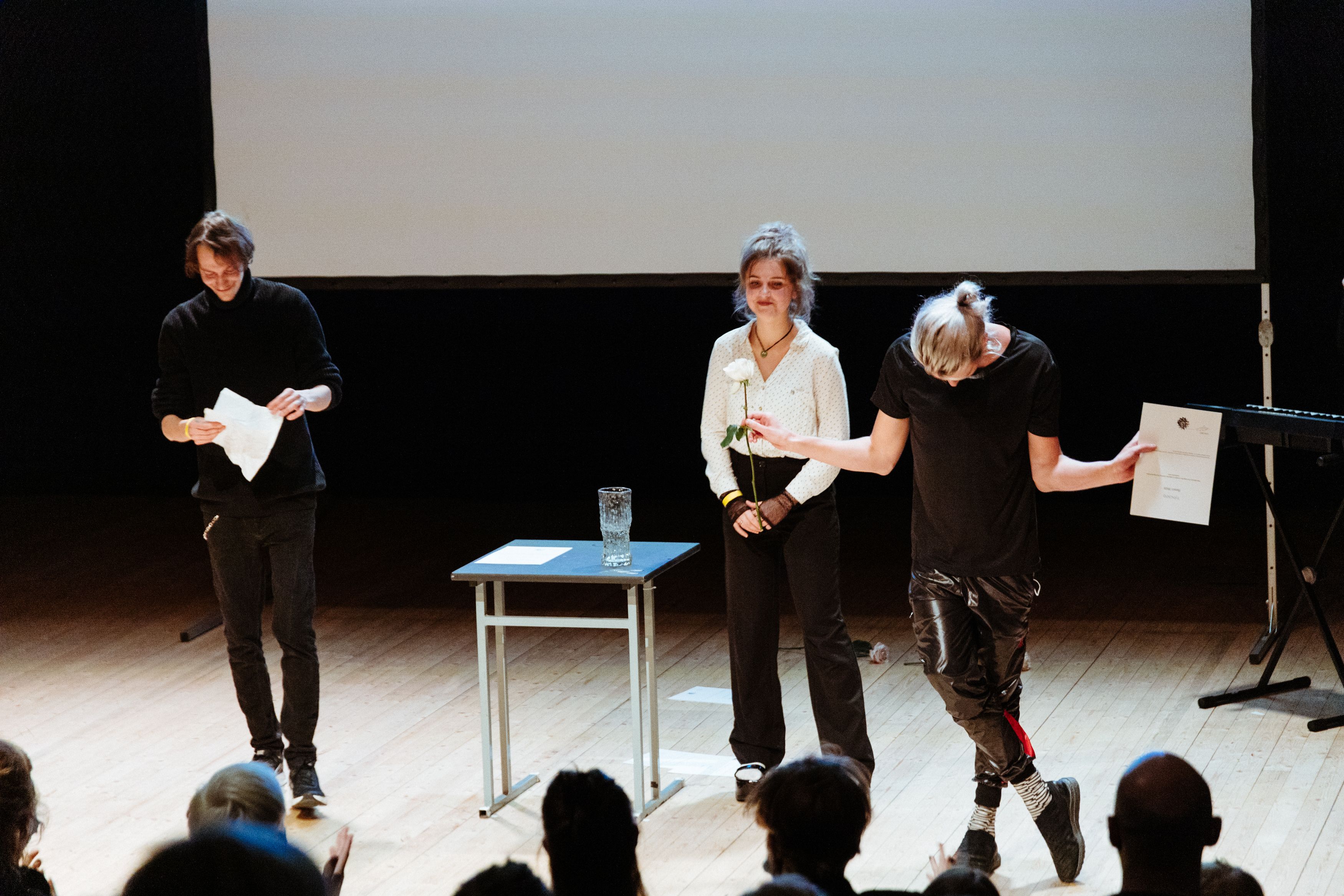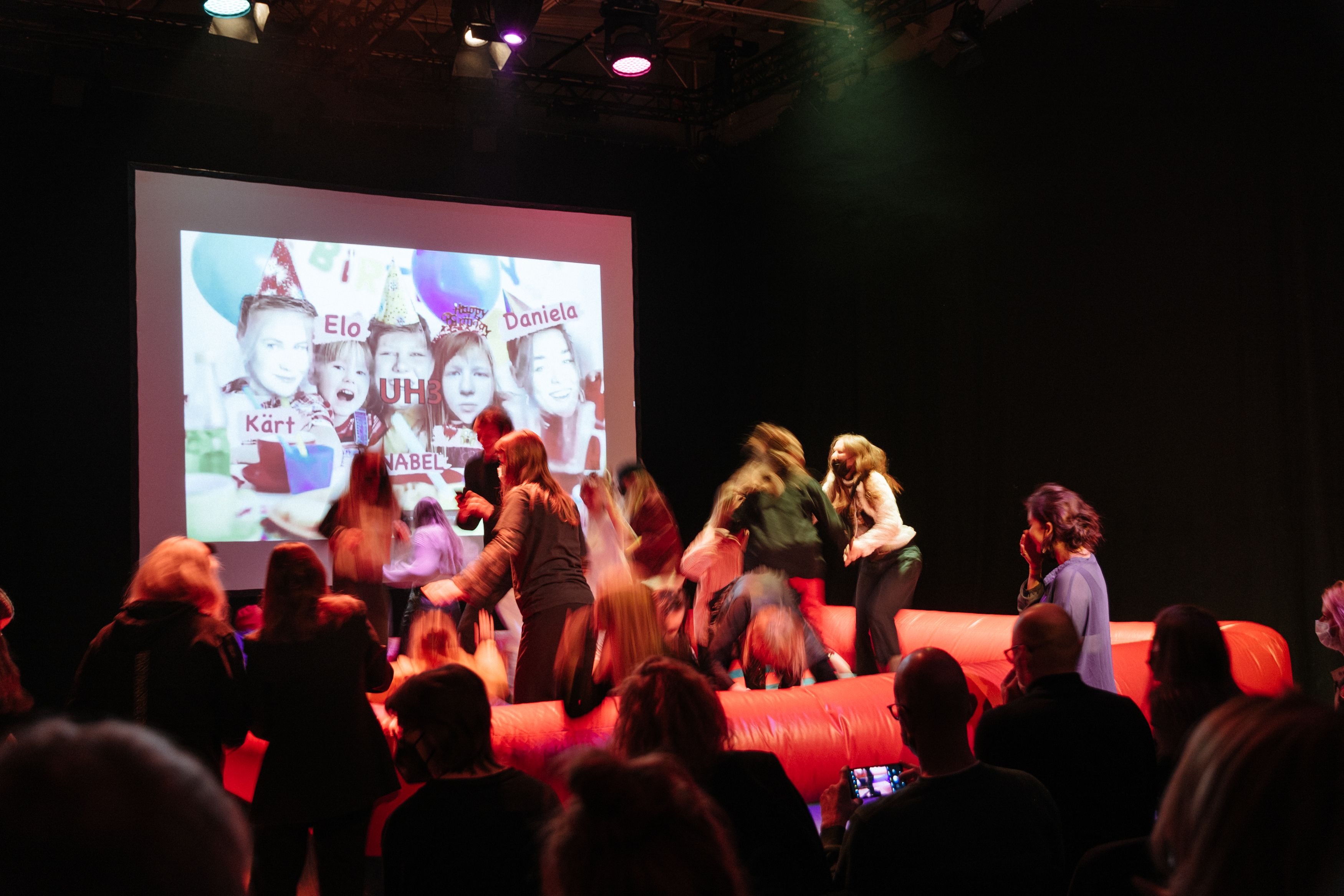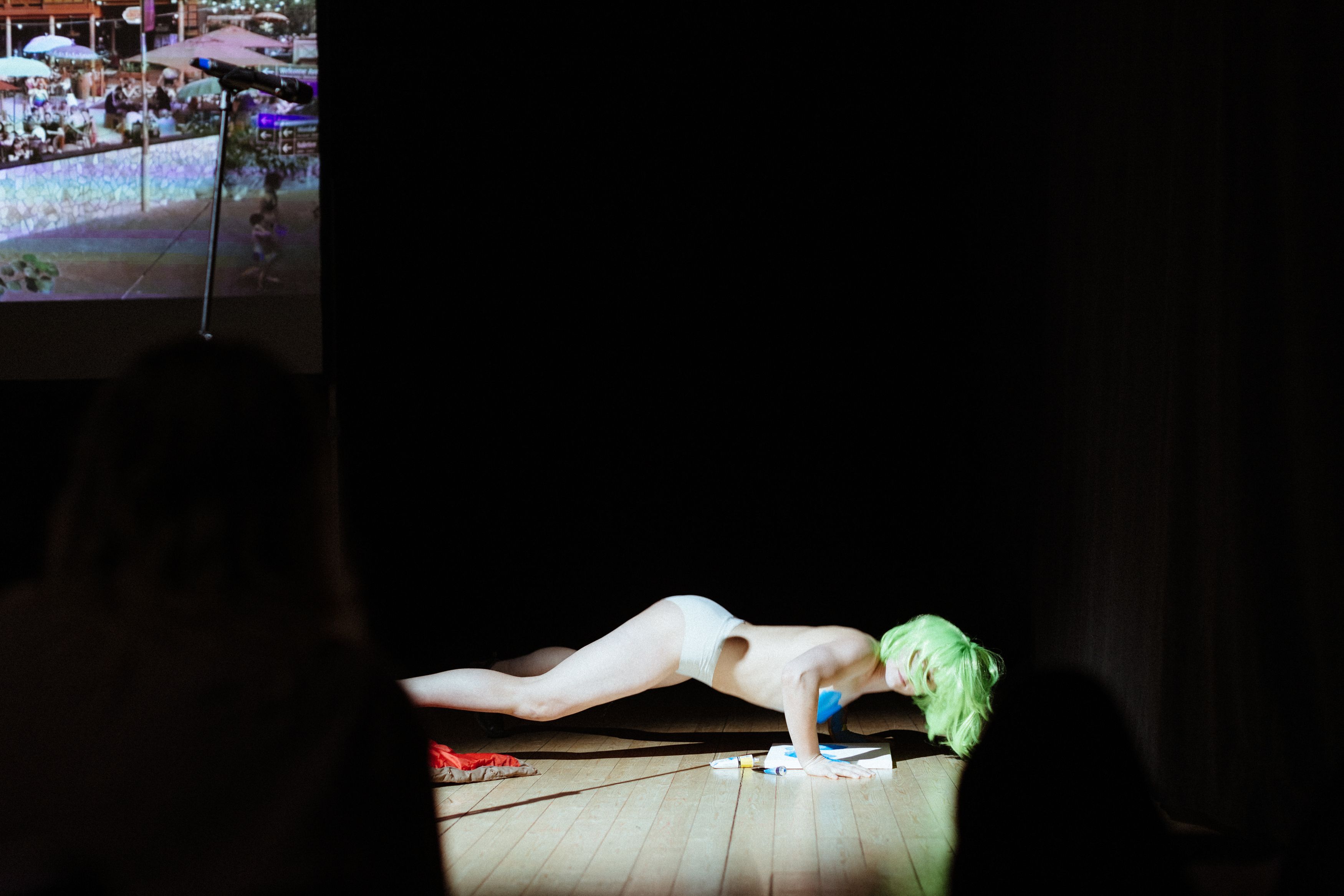"I believe that today, first of all, we will live through all the joy and what history has left us for today, and for that I wish everyone good luck and the will to continue to move forward."
Arnold Rüütel "What is performance?"(1)
The 15th(!) Made in Estonia Marathon took place at Kanuti Gildi SAAL on March 12th. Although the performers are expected to present short performances (the performances are limited to 10 minutes), for the audience it is a real long-watching experience, with four sections and 35 performances spread over 7 hours.
The fact that short forms are fashionable is something no-one doubts in. Short stories, tweets, memes, puns - anything that is concentrated, intense, quickly consumable and shared, and often easily forgettable. The short form places high demands on the creator - a limited form needs concentrated content, imagery and generalisation, and it wouldn't be bad to include a plot twist. These requirements apply to all media, whether text, image or audiovisual.
For me, the first time I attended one of the Made in Estonia Marathons, the event left an unforgettable impression. I was not only surprised by the quality of the performances, which took just a couple of days to prepare, but also by the bubbly audience always supporting the action, warmly cheering the performances and gathering to the dressing room and the street during the intermissions. Made in Estonia Marathon is undoubtedly an excellent platform to try out ideas, get professional feedback and make new connections.

Alexei Gordin, Kristina Koobak, Olesja Semenkova "Rahva hääl"
For the curious spectator, whose relationship with contemporary performance art is still weak or non-existent, the event offers a handy opportunity to get acquainted with the field. The 30+ performers will provide a good insight into the diverse expressive possibilities of the performing arts, both good and bad. Again this year, the works ranged from dance and aerobics to more conceptual and socially critical actions. The art awards ceremony, staged by Alexei Gordin, with slides of anonymous online comments criticising contemporary Estonian art playing in the background, vividly demonstrated how contemporary art is still equated with painting with menstrual blood or shitting in a can. Neither of these activities was part of Made In Estonia. But on the other hand, if a performer is completely unpalatable to the someone, it is good to remember that after 10 minutes at the latest, it will be over.
Considering the turbulent political situation of the last few weeks, the crises piling up one on top of the other and the proximity of the Kanuti Gildi SAAL to the Russian Embassy, it was even surprising that the so-called current affairs almost didn't make it to the stage. On the other hand, the therapeutic and liberating effects of art are not only manifested in the message. On a personal level, I was delighted that during the seven hours we spent in the Kanut, not once did I feel tempted to open the news portals, and for a moment life seemed almost normal.
The four blocks of the marathon were separated into four sections - an empty stage, a black box, mixed media performances with screens and a 'punk section' with an inflatable trampoline spread almost the entire length of the stage floor in the middle.

Unholy 3nity ja Elo Vahtrik “Suurepäraseid ideid, suurt eelarvet, entukat produtsenti, palju kulka toetust, tugevat vaimset tervist ja armastust teile kallid!”
The spatial poetics of each section also set the tone for the performances. The first works, created for an empty space, were the most playful, humorous and often self-deprecating. A good example of the latter was the performance of the Tantsuvastased “Ühel õhtul avaldunud sarnasused”, which, with hipster joie de vivre and sophistication, cursed the dancers' negative side effects on their fellow citizens. The contrast of form and content also brought to mind “Läänelik vaade demilitariseerimise operatsioonile” by Üks Isiksus, which, in the melody of invisible harp melodies, roared out a brief history of life, from the emergence of the first living organisms to the 'sustenance of the pensarians' in a matter of minutes. The stage darkness and minimalism of the second section brought out the more decadent side of the performers. Angst and physicality dominated. The third round, the 'mixed media', was the most varied, with video works, camera-mediated bodies and socially critical statements (e.g. Sigrid Savi's 'Dieses Wasser löscht mehr als einfach nur Durst'). The evening ended with a trampoline jump. In its dual role - as a prop for children's birthday parties, but also as an improvised wrestling ring - the trampoline brought out both joie de vivre and aggression in the performers.

Sigrid Savi “Dieses Wasser löscht mehr als einfach nur Durst"
In Estonia's increasingly professionalised (what a beautiful word!) arts landscape, the Made in Estonia Marathon fills a niche for a more democratic platform (2). It is an art event without curators, funding bureaucracy or a fixed end result. It is an art form that is euphemeral and playful, anonymous and fleeting. All artists wishing to participate will be accepted. The roles of audience and performers are mixed - most of the performers sit in the audience's seats, with more empathy than the general public. Although the programme on the walls can be followed at a glance, the faces of the performers, who change rapidly throughout the evening, inevitably melt into a single stream.
1 https://www.youtube.com/watch?v=jhMLgB5I_f0&ab_channel=p1ntsel
2 Vt ka Maarin Mürgi endiselt ajakohast arvustust Made in Estonia Maratonile: “Fännikiri “Made in Estonia maratonile” (Sirp, 20.04.2018)
3 Mati Unt “Sirise, sirise sirbike” (2003), lk 8
Photos: Joosep Kivimäe